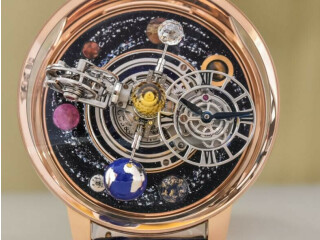What Are Solvent Dyes? Full-time Job
3 years ago Business Development Samraong 631 viewsJob Details
A Solvent Dye is a type of color dye that dissolves in organic solvents, creating a solution. The ability to mix with solvents is due to the non-polar nature of the dye chemicals. This class of colorings is used in a range of products including ink, plastics, and resins. Within the class of solvent dyes, there are other types of dyes that relate to specific colors, such as red or yellow and green or blue.
Chemicals that can easily dissolve in other chemicals and form a solution are called solvents. They cannot, however, be dissolved in water. These dyes are completely soluble in organic solvents, which means they will not form a separate layer or residue. The ability of the dye to completely dissolve is important to achieve a consistent color.
Unlike other colorings, Solvent Red Dyes do not easily ionize. Ionization refers to a compound's ability to change polarity by gaining or losing an electron from another compound. This function is why solvent dyes do not dissolve in water, a highly polar substance. This dye class tends to be made of aromatic, colored compounds that easily dissolve. The naming system for these dyes use a color index, following a classification system: solvent + color + number; solvent blue 35. This system is based strictly on color, and not the chemicals used in each of the different dyes.
The chemical activity of these colorings are important as they can dissolve in non-polar chemicals. Common non-polar compounds are oils, fats and fuels. Solvent dyes are used extensively to color plastics. Other uses include coloring resins, wood stains and waxes. The color in pen inks, candles and printing ink are made of these colored dyes.
There are scientific uses for these dyes, as they are used in solutions that stain the different structures found in cells. These stains are used in research as well as medical diagnostics. Dyes can even be customized for specific processes.
Solvent Yellow Dyes are also known as azo dyes. These are synthetic and contain a nitrogen double bonded to another nitrogen. This is known as an azo group. As many as 70 percent of all textile and food dyes are azo colors.
Green and blue dyes are commonly known as anthraquinone dyes. Anthraquinones are chemicals that have the molecular structure containing 14 carbons, eight hydrogens and two oxygens. By adding an amino group of hydroxyl group to the basic structure, a range of colors is created.
Metal Complex Red Dyes belong to numerous application classes of dyes. For example, they are found among direct, acid, and reactive dyes. When applied in the dyeing processes, metal-complex dyes are used in pH conditions that are regulated by user class and the type of fiber type (wool, polyamide, etc).
Basic Dyes and its application in dyeing and printing process are interesting. Jute fiber and its generated products are treated with basic dyes. I have written about the jute fabric printing with basic dyes in one of my blog post. I think that's will help you to know about the printing process of basic dyes.
Basic dyes are called cationic dyes because when salts of organic bases are ionize into an-ionic and cationic part that's time cation is the responsible for color production. On the otherhand basic dyes are basically hydro-chloride or salts of organic bases. Generally they are in-soluble in water but it becomes in soluble form when treated with alcohol or methyl-ated spirit. Basic dyes dyeing are carried out in acidic form. Dyeing process for different fibers are varies.
Many new dyers are often nervous about Acid Dyes when they first hear of them; they think the dyes themselves are harsh flesh eating caustic acids. In reality the acid dyes available to the home dyer are non-caustic and very safe to use. A few are even safe enough to eat - such as those sold as food coloring or used in popular drink mixes (please don't eat the dyes). Most broad use "over the counter" all-purpose dyes, like Rit® and Jacquard's all-purpose iDye, have an acid dye component included to dye protein fibers. When home dyeing, Acid Dyes should, of course, be handled with the normal care that you would handle any concentrated powdered dye or craft chemical, which is wear a dust mask when mixing the powders, wear gloves, use good housekeeping procedures, you know the drill.


